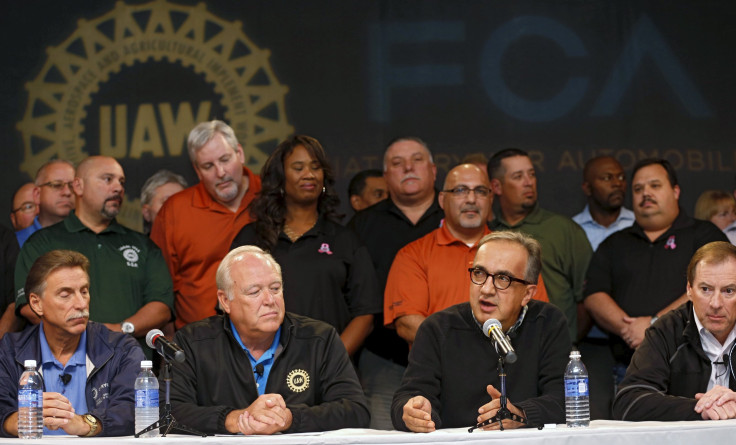As Big Three Labor Contract Talks Roll On, United Auto Workers Union Wins Concessions From Fiat Chrysler Automobiles

It’s a tough time to be a blue-collar worker in the United States. But for tens of thousands of autoworkers, the future is a little less foreboding than it has been in recent years.
This month, the United Auto Workers signed a contract with Fiat Chrysler that secures higher wages and generous benefits for the company's 30,000-plus hourly workers. As part of its so-called pattern bargaining strategy with the Big Three automakers, the union is soon expected to reach similar labor-friendly agreements at General Motors and Ford. All in all, the contracts cover roughly 140,000 workers.
The crowning achievement for workers is the apparent elimination of a two-tiered wage system under which Big Three automakers paid new hires about $10 an hour less than senior employees.
“This really indicates a sharp turn for the UAW, from being a union on the defensive to a union returning to its historical role, ensuring that workers and their families are getting a good share of what companies produce,” says Harley Shaiken, a professor at the University of California, Berkeley, and expert in labor relations in the auto industry.
Still a far cry from the juggernaut that once represented more than a million autoworkers, the UAW agreed to tiered wages in 2007, a time of industry distress that preceded the painful federally administered bailouts of GM and Chrysler. Since then, automakers have recovered, fueling rank-and-file clamor to scrap the wage gap. After Fiat Chrysler workers voted to reject the first tentative agreement, they ratified an updated agreement that gradually eliminates the wage gap over eight years.

More than 40 percent of the Fiat Chrysler workforce is entry level. Under the old contract, they earned $16 to $19 an hour. Under the new deal, they will make roughly $29 an hour after eight years.
The UAW announced Monday it had reached a tentative agreement with General Motors. Neither side disclosed details, but the contract is widely expected to be similar to the one at Fiat Chrysler. If and when the GM’s 50,000 workers ratify the contract, union negotiators will sit down with Ford and hammer out the third and final contract. Both GM and Ford are on better financial footing than Fiat Chrysler and employ relatively fewer entry level workers, leaving observers to expect few major obstacles.
Workers’ demands have been lifted by impressive profits at the companies. GM’s third-quarter earnings came in at a healthy $3.1 billion. Ford’s earnings last quarter were nearly 50 percent higher than at the same point last year. Meanwhile, Fiat Chrysler’s second-quarter profits of $1.4 billion in North America are more than double those at the same point last year.
“This agreement represents an investment in our U.S. workforce and recognizes its contributions to the Company’s growth over the past six years,” Fiat said in a statement. GM expressed a similar sentiment about its contract talks.
“Working with our UAW partners, we developed constructive solutions that benefit employees and provide flexibility for the company to respond to the needs of the marketplace,” GM spokeswoman Cathy Clegg said in a statement. She did not share any details about the contract.
Other than the elimination of a two-tiered wage system, the preservation of generous healthcare benefits is seen as another key labor victory in contract talks.
“There’s a larger message here,” said Shaiken, the labor relations expert. “For companies in a highly competitive global industry, it is possible to be very profitable and have very good, middle-class wages.”
Decades ago, when manufacturing played a much larger role in the U.S. economy than it does today, pattern bargaining between the Big Three and the UAW used to command the attention of employers nationwide. But when it comes to measuring labor costs today, large companies typically take their cues from elsewhere.
Moreover, most of the country’s foreign-owned auto plants are nonunion. Workers there tend to receive less-generous wages and benefits. The autoworkers’ union has attempted to organize factories in Mississippi, Tennessee and Alabama -- run by Hyundai, Volkswagen and Mercedes, respectively -- but with extremely limited success so far. Never has a majority of workers at a Southern auto assembly plant voted to unionize.
About 935,000 people work in the U.S. auto manufacturing industry, according to the Bureau of Labor Statistics.
© Copyright IBTimes 2024. All rights reserved.





















